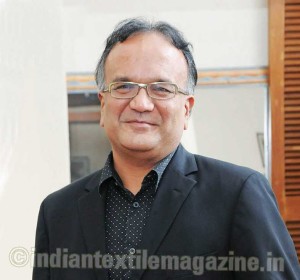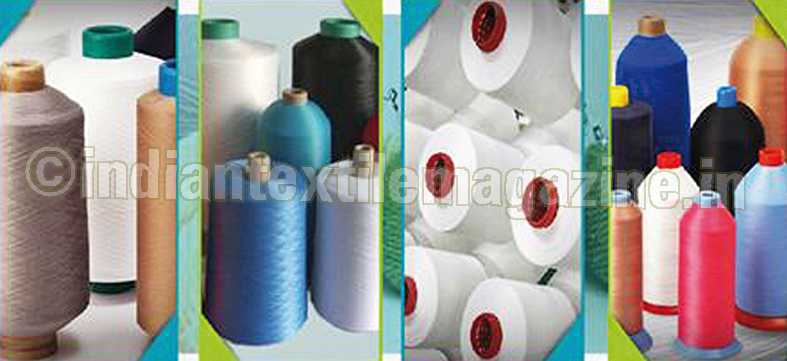Sarla Performance Fibres Ltd. (SPFL), a leading exporter of regular as well as high tenacity polyester and nylon yarns, started operations 20 years ago as a commodity manufacturer of man-made fibre, but transformed itself into a high value-added yarn maker in the past decade. It has an installed capacity of 11,900 tons per annum for manufacturing yarns at Silvassa and 3,200 tons per annum for a dyeing unit at Vapi. In December 2013, SPFL launched its yarns in the US market through its 100 per cent subsidiary Sarlaflex Inc., by setting up the 30 tons per day POY plant in Walterboro, South Carolina. The company’s emphasis has been to focus on niche end user applications, higher value-added yarns for leading global apparel brands and companies. It exports to over 50 countries.
During 2013-14, the overall sales of the company were Rs. 24,605.91 lakhs as against Rs. 23,353.98 lakhs in 2012-13, registering an annual growth of 5.36 per cent. The FOB value of exports of the company was Rs. 14,847.14 lakhs compared to Rs. 14,922.28 lakhs the previous year.
During an interaction, Mr. Krishnakumar Jhunjhunwala, Managing Director and CEO, Sarla Performance Fibres, answers several important questions related to the company’s venturing into the US market and the prospects for further investment in India.
Question: What is the rationale for setting up a polyester fibre manufacturing unit in the US?

Answer: We became compliant yarn makers by having a direct manufacturing facility in the US which can supply anywhere in the NAFTA and CAFTA region. The apparels, innerware and hosiery, made from compliant yarn do not attract any duty. This makes us a preferred supplier to large textile companies in the NAFTA and CAFTA region. We found the cost of manufacturing to be very competitive in the US with India except in terms of labour. However, to a large extent this is offset by cheap cost of power and capital.
Our unit is in proximity to world’s largest textile companies and the largest markets, providing us greater scope for a value add. We can truly work with large corporations as partners and customize products to their need as well as cut down on logistics cost. With the US facility, we are now truly a global supplier with already established manufacturing in India and with the distribution and marketing set up in Europe. We are comfortable with growing in the developed markets as compared to India or other emerging markets and will stick to that strategy for at least the next few years.
Q: What are the biggest challenges that you see in the US market? When will you start making profits?
A: We could set up a full-fledged POY production unit in the US within 12 months of selecting a site. In terms of time to set up and cost, we benefited immensely as compared to a similar greenfield facility in India. Thus, our first hurdle was over when we started commercial production in January 2014. The second challenge is that the US customers have their norms for product trial, and for the past few months, we supplied trial quantity to several of them. We even participated in trade fairs and have created reasonable awareness about our presence in that market. We believe it will take not less than a year from the date of starting production for us to start shipping large quantities to customers.
The third challenge is training of workers at the shop floor level to increase productivity. This is an ongoing process and we are putting our best effort to bring people from India who can train most of our local staff. In recent times, obtaining work permits in the US has been a lengthy and costly affair. We wish to start breaking even over the next few quarters. We have put up this plant with an optimum capital cost and tightly controlled the recurring cost, which should enable us to make profits within 12-18 months.
Q: Over the past one year, Indian textile companies have performed well. What stops you from investing further in India?
A: We have a strong set-up in India which can continue to provide us growth of 8-10 per cent per annum in value terms. We keep doing maintenance capex each year to strengthen our capability. However, we are not keen to incur large capex in India due to less attractive infrastructure, overall rise in the cost of land, construction and lack of ease in getting approvals. The Indian textile companies have done well in the aftermath of INR depreciation against the dollar, but scalability remains an issue. Moreover, in the case of polyester fibre companies there is still a struggle, and many companies have stressed balance sheet and cash flow. While we may grow slowly in India in revenue terms, our focus has always been on profits and that will continue.
Q: How do you intend to reward your shareholders?
A: As can be seen from our track record of the past decade, we have been increasing the business growth steadily, resulting in increased earnings per share. Also, we have been distributing 15-20 per cent of our net profits. For FY14, despite large capex and having a new unit in the US, we maintained dividend pay-out at 16 per cent (Rs. 7.5 vs. Rs. 6 per share in FY13). The shareholder value will increase in the coming years as ploughed back profits into new expansion will start reflecting in the earnings growth.

